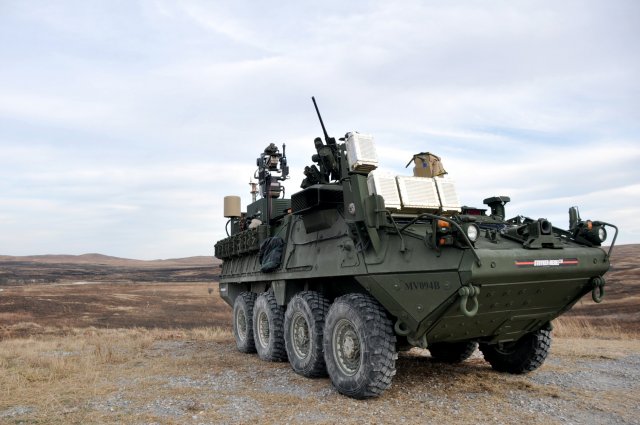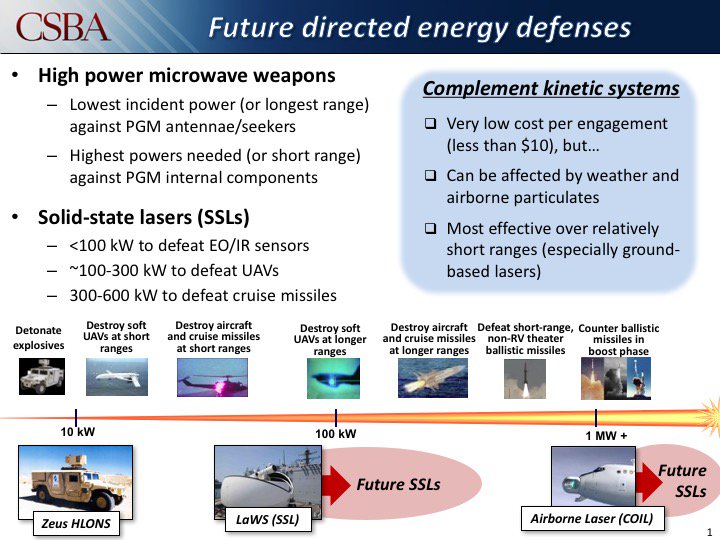The US army invested additional funds in the development of laser weapons to protect itself from enemy drones and missiles.
The Army has moved a total of $25 billions of investments to the Big Six Modernization priorities. The Big Six are as follows: Long Range Precision Firepower (LPRF), Next Generation Combat Vehicle (NGCV), Future Vertical Lift (FVL), Network, Air & Missile Defense (AMD), Soldier Lethality. Out of these the AMD gets the biggest share at $6.8 billion.
Air & Missile Defense modernization director, Brigadier General Randall McIntire said that the AMD has “put over 50 percent of our S&T (Science and Technology) money going towards directed energy projects,” up from about a third previously.
As reported by Breaking Defense, there is an urgent deadline to meet in 2020 for the Interim Maneuver Short-Range Air Defense (IMSHORAD) system now going on 8×8 Strykers. It had to use existing technology, meaning its two first battalions, that are to be combat ready in 2022 will use a combination of missile launchers and machineguns.
However, the non-interim MSHORAD will have “more of a directed-energy focus,” meaning laser weapons, according to McIntire who spoke to reporters at the Association of the US Army conference. The system will also likely have electronic warfare systems to be used to jam the transmissions directing enemy drones.
MSHORAD is the next stage of the US Army’s ongoing Multi-Mission High-Energy Laser (MMHEL) experiments with Stryker-mounted lasers, which aim to field-test a 50kW weapon in 2021.
Tests have shown 2kW and 5 kW weapons can burn out incoming drones, providing valuable lessons for future training and tactics. “One of the things we need to do is start to build a bench of directed energy experts,” McIntire said. After the talent pool is established, the army would be ready to field laser weapons.
The Army is also developing a 100 kW laser mounted on a larger but less mobile vehicle, the Oshkosh FMTV truck. This vehicle with the large laser weapon would follow the MSHORAD and serve as the Indirect Fire Protection Capability. Truck-mounted IFPC lasers and missiles would protect command posts, helicopter rearming points, supply dumps, and other support sites against cruise missiles, air attack, and long-range rockets.
The AMD is also proposing a sort of air defense laser to go on the Future Next Generation Combat Vehicle.
China and Russia are also reportedly working on their own laser weapons.
On July 5th, Popular Science reported on China’s laser rifle. It is called the ZKZM-500 and it consists of two important components- the laser (likely solid state, usually fiber optics doped with rare earth materials), and its lithium battery, which account for most of the weapon’s weight. The weapon reportedly has a half a mile range. It can potentially shoot 1000 two second shots, possibly not at full power. The idea is for it not to be lethal, rather to be used for crowd control by the People’s Armed Police.
In May 2018, Business Insider also listed laser weapons that China has developed. They included: Low-air Guard-I, which is a ground or vehicle-based laser weapon system; The Silent Hunter, which was used as security at the G20 in Hangzhou in 2016, it is a 30-100kW vehicle-based laser weapon system has a maximum range of 4km; Guorong-I anti-drone system a short-range ground-to-air laser weapon system, it has a detecting radar, electro-optical interference device and high-power laser ejector; Light Shield comprehensive optoelectronic defense system, which is a vehicle-based air defense system that targets incoming aircraft, a vehicle’s electro-optical pod or transmitter, or a missile’s optical guidance system; and finally Individual laser systems, such as four types of laser guns that were revealed in the Global Times in 2015.
Russia is also reportedly hard at work on laser systems. On March 1st, Russian President Vladimir Putin revealed several weapons, most significant of which were the hypersonic ones. However, he also revealed the Peresvet. There was also a video, titled “Combat Laser Complex” which shows a truck, equipped with a mounted laser weapon.
Russian Deputy Defense Minister Yuri Borisov claimed that the “combat laser systems” Putin spoke of has been in use by the Russian army since 2017.
Laser weapons, currently seem as something absurd, however, all other weapons revealed by Putin on March 1st turned out to be real, some of them have even been tested.
It is yet unclear if all these investments in laser weapons are actual and will really see the light of day and combat sometime in the future, or if they are just another way of spending money with no apparent result in sight. At this point it is similar to Trump’s Space Force concept.







